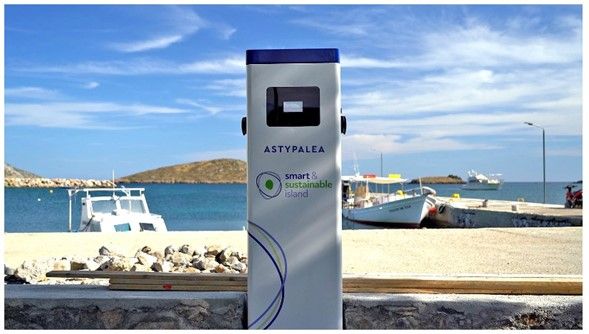Best Practice
“SmartAstypalea” offers a pathway to the gradual replacement of the public and private vehicle fleet on the island with electric vehicles. Concurrently, an innovative transportation system is introduced while RES infrastructure is built to shift the island’s energy mix away from fossil fuels, and eventually to reduced GHG emissions.
These are achieved by the implementation of a financing program for new electric vehicles, the installation of an EV charging network, the introduction of on-demand and micro-mobility transport services, and a commitment to future accommodations for autonomous driving.
Construction work for the upgrading of Astypalea island energy network started in January 2021.
Planning of new RES infrastructure, charging points placement selection and the identification of the legislative framework for the “on-demand shuttle service” followed, along with the installation of the first 12 publicly available charging points, the launch of the “e-astypalea” platform and the delivery of the first EVs to local authorities (police force, coast guard, civil aviation, municipality).
The implementation expanded to private fleets and the public infrastructure for the shuttle service, resulting to over eighteen thousand trips until August 2022.
The capacity of the island’s electrical grid was one of the technical challenges, eventually tackled with upgrading works. Getting local citizens onboard and informed about the project was done during a town hall meeting, where the project was presented to them. The interfuncitonality and combination of all distinct services that comprise the smart mobility system of the island were connected at the user level through the “e-astypalea” platform. A challenge to older citizens of the island, not having smartphones is the use of the “Astybus” service, relying on their younger relatives to order shuttles for them.
The all-inclusive approach to transitioning to a smart multimodal mobility ecosystem can be replicated to other small localities with well-defined resource flows. A model of triple-helix cooperation adopted during this project is well-tested and applied in many different conditions. The concrete governance design, research approach, action plans, and implementation have general features that allow them to be adopted when transferred. As there is a significant number of remote places in Greece that can benefit from a twin transition of their local mobility, the domestic transfer of this practice is highly probable.
Organization



